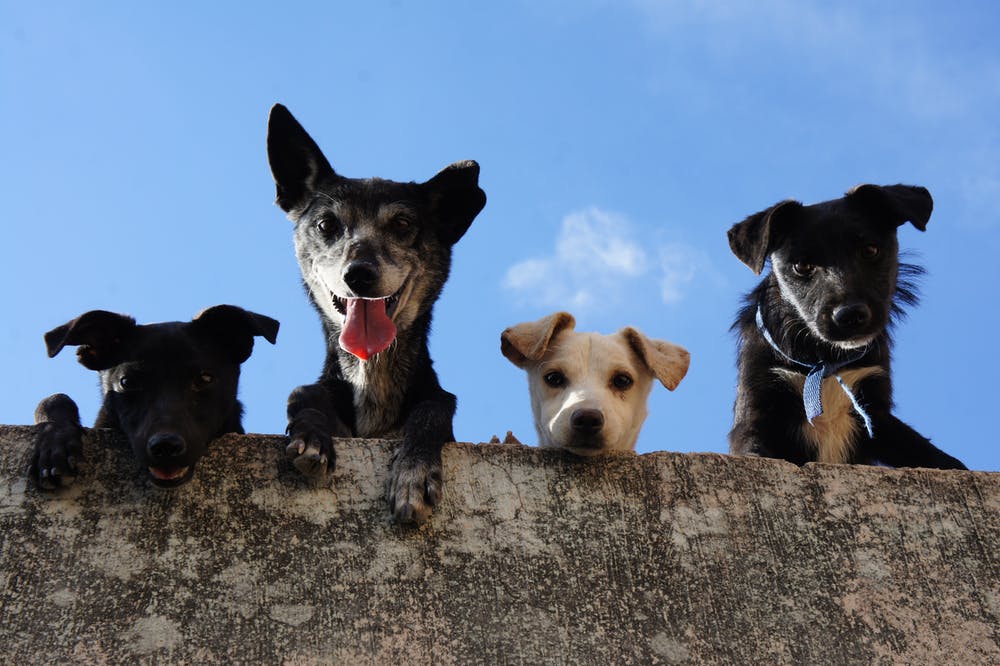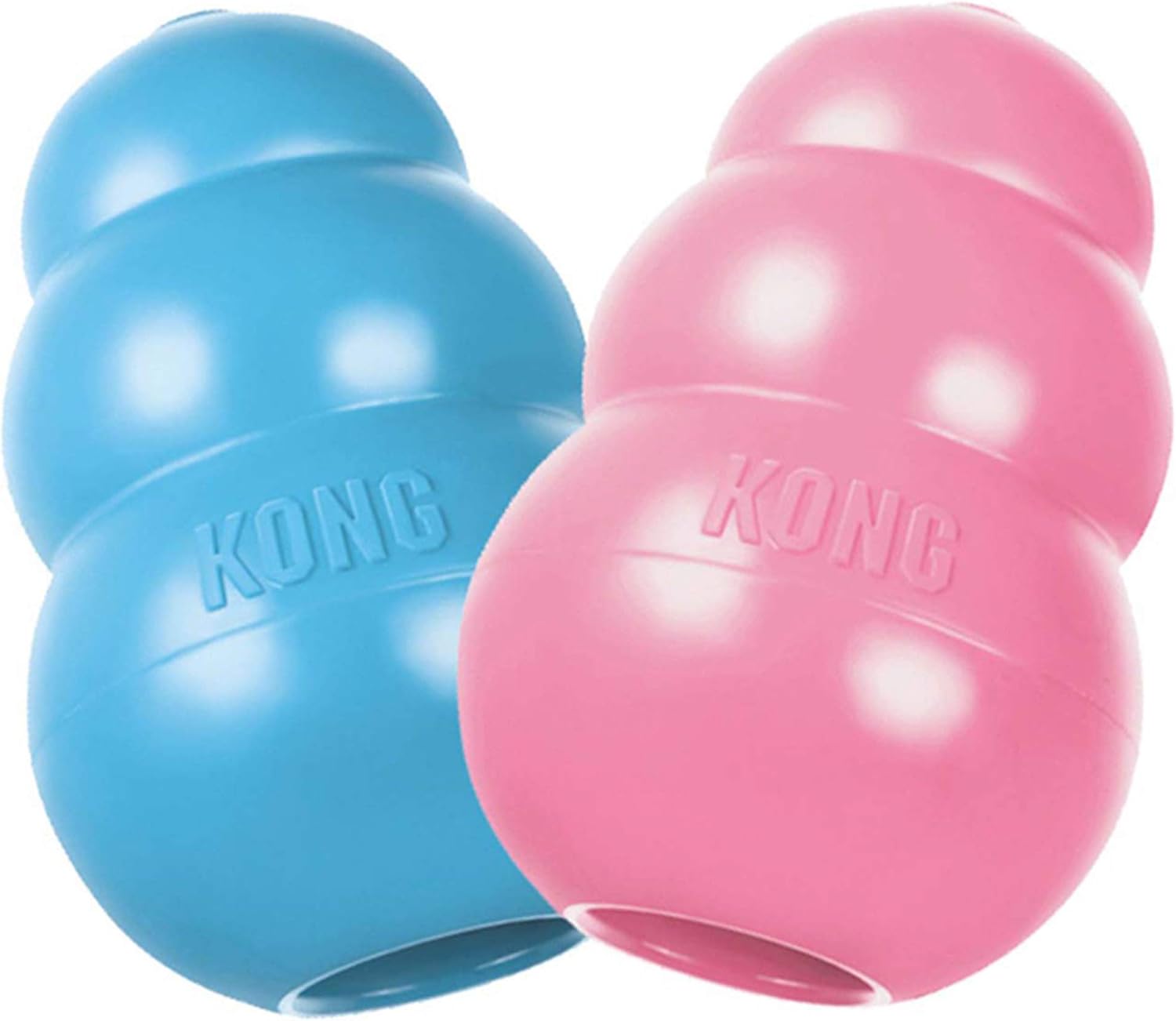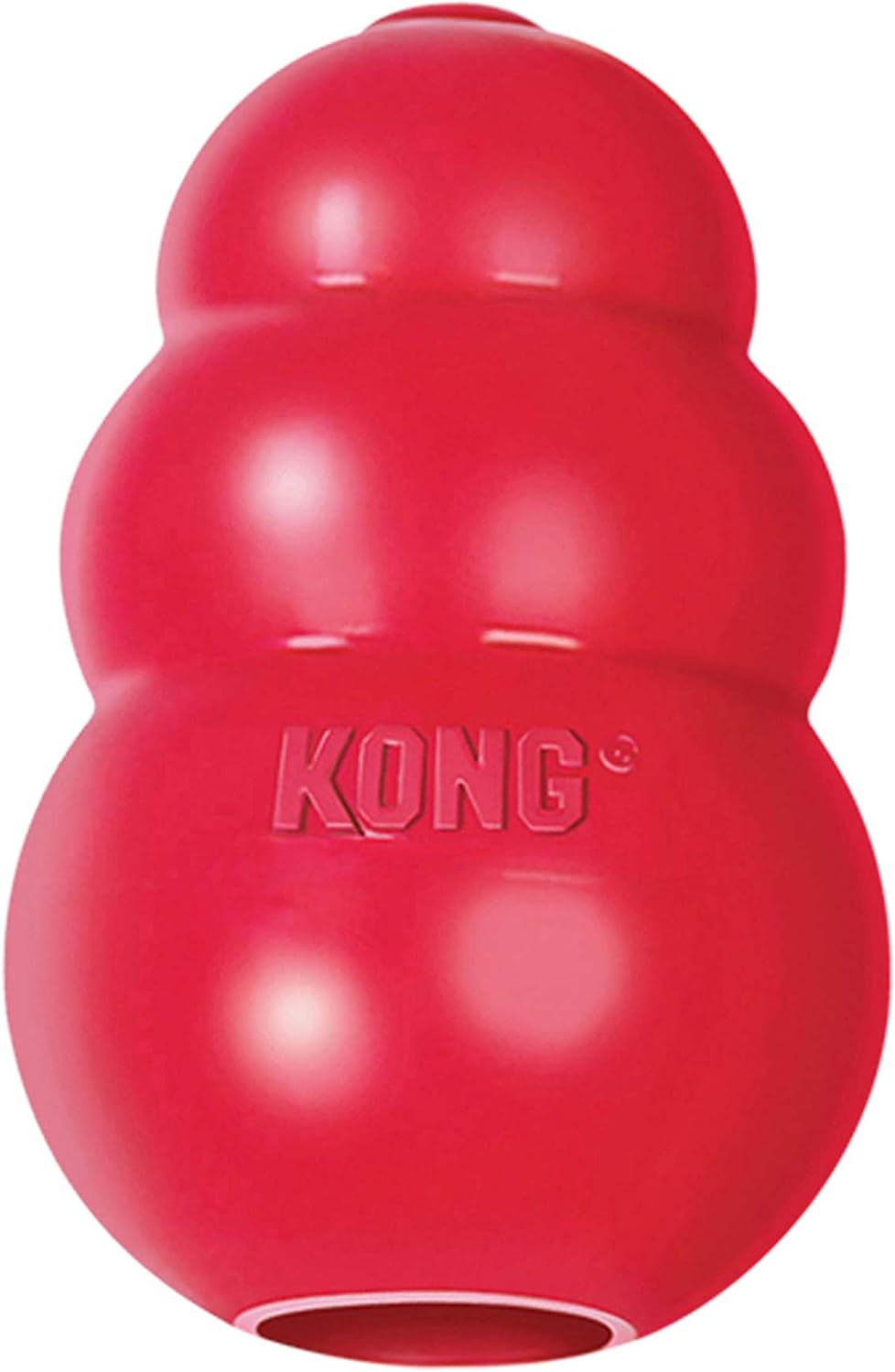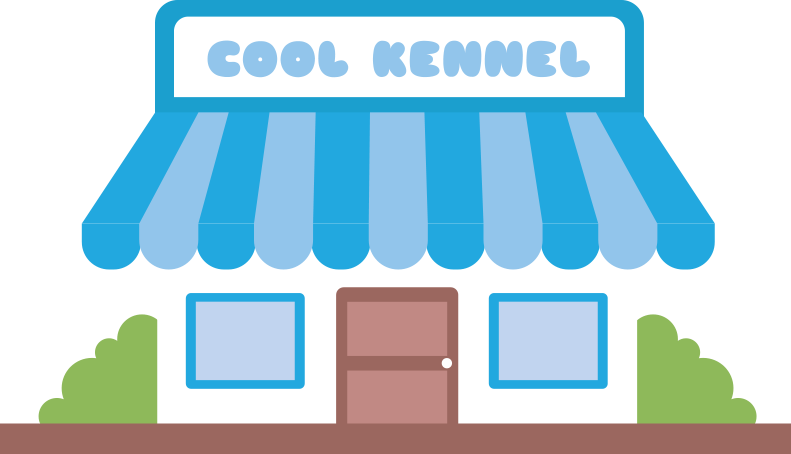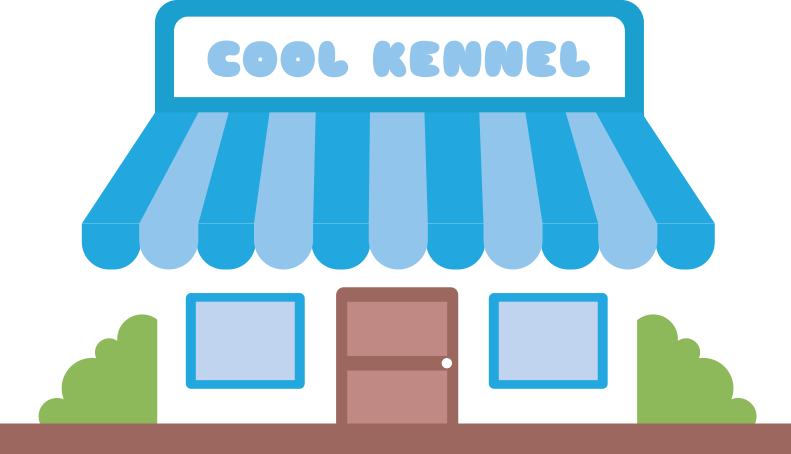So you have considered all of our advice about getting a new dog or puppy during lockdown and have taken a responsible, sensible and long term decision that you are able to meet a dog or puppy’s needs. This is fantastic news and I am sure that your new dog or puppy will be very excited to come home with you. You are now probably searching the internet and getting lost in the myriad of dog products out there. So to help you out here is The Good Kennel Guide’s advice on essential equipment that you need for your new dog or puppy straight away. This is The Good Kennel Guide's top tips as to what things you really need and what to think about when you are choosing between the different products that might be on offer, as well as our recommendations on the things that could really wait or aren't really worth investing in right away.
What type of bed do I need for my new dog?
Your dog will need a comfortable bed to sleep in- ensure that you pick one that is big enough for them, particularly for them to grow into if you are homing or rehoming a puppy or dog that has not yet finished growing. It you know that you aren't going to put them in a crate to sleep in, it might be worth purchasing a more basic bed to start with until you understand more about your dog- for example does he/she prefer sleeping in cool or warm places, does he/she prefer to be flat or do they like to have a pillow, do they prefer to sleep in a space that is covered (i.e. under a coffee table) or that has surrounding walls (between pieces of furniture) rather than somewhere more open. Do they have a single spot in the house where they tend to sleep or do they have a couple of different spots where they like to sleep. All of these questions will help you to work out what style of dog bed would be most suitable. You should also consider the age of your dog- older dogs might need an orthopedic style bed to give their limbs and joints a bit of added support and to prevent sores and aches and pains. Puppies and smaller dogs might also like a "cuddler" style bed that they can really bury themselves in.
|
|
My First Pet Bed £42.10
This bed has a clever "ticking" pocket which you can use to put a small clock in, this mimicks the mother's heartbeat and helps to settle your puppy. The inner cushion ring is removable as your puppy grows and the base cushion contains a pouch for a heatpad.
|
You might also want to check out:
What type of bedding do I need for my new dog?
A “vetbed” is suitable for most dogs and can be reassuring for puppies and prevent sores in older dogs, this could be a sufficient bed in itself or be used to line a separate bed or be used to line a crate. They are also hygienic, machine washable, non-allergic and resistant to chewing. It is advisable to have at least 2 beds so that you have a spare when washing and ironing their bed.
Should i buy a blanket for my new dog?
Whether it is winter or summer it might be a good idea to have a dog blanket when you first get your dog. Being homed or rehomed can be a stressful experience for a dog and they might find it comforting to have something soft and cuddly to snuggle into, hide under or bury their face in. This can literally be a security blanket to your dog and can be useful later on whether it ends up draped over their crate, in their bed or just being around to settle them down when you are not there.
What type of bowls do I need for my new dog?
You will need at least 2 non-slip bowls, one each for food and water. Having extras for different in the garden can also be helpful for outdoor play or when washing other bowls. Tall dogs will find it more comfortable to eat from a bowl that is raised off of the floor. You should always ensure that your dog has access to fresh, cool (not cold) drinking water at all times. If you do not have a non-slip bowl you could consider a non-slip mat to put bowls on- this will save mess and scratching on your floor and avoid your dog getting too frustrated from chasing their bowl around! For dogs which eat too quickly you might want to try a slow bowl which encourages them to eat more slowly, avoiding tummy upset and bloating, these dont suit all dogs so ensure you strike a balance between helping your dog and putting them off their food. Remember that tall dogs might find it more comfortable to eat and drink from a bowl that is raised off of the ground.
You may also want to check out:
What sort of food should I buy for my new dog?
Food that is appropriate for your dogs age, size, breed and weight and that responds appropriately to any allergies or preferences that they have. If you are homing your pet from a breeder or rehoming them from a rescue centre they should be able to advise you about the food they like and the quantity to give them but ensure that you speak to your vet too and follow dietary advice about how much to feed your dog based on the their age, weight and needs. It is very important not to over or under feed your dog as this can result in health issues later on. It sounds gross but you should also keep an eye on their toilet as if this is a little runny it might indicate either a health concern or an allergy to something (including to their food). There is a plethora of different foods out there including organic, raw, grain free and hypoallergenic ranges and you should speak to your vet if you are unsure.
What sort of dog treats do I need for my new dog?
Similarly to dog food, treats should be suitable for the age, weight, needs and tastes of your dog. You should bear in mind how many treats they are likely to get (for dog training very small treats are recommended) or if it is a once a day size treat it is ok to go a bit bigger. Whichever type you choose be sure to stay within dietary guidelines for your dog- there is no point treating them now, only to put them on a diet later. You could think about giving them healthy treats such as carrots, or bananas. You could also try smearing a bit dog peanut butter on their favourite toy for them them to lick off (human peanut butter is also fine for dogs providing it does not contain Xylitol- a sweetener that adversely affects their blood sugar and can cause them to become ill or die). Some "human" foods can be poisonous for dogs so always check before giving anything to your dog that is not strictly labelled as dog food. As with dog food there are a range of organic and hypoallergenic alternatives available.
You may also wish to check out:
What sort of collar should I buy for my new dog?
Ensure you choose a collar that is suitable and appropriate for the breed, size and age of your dog. Puppies grow so fast that their collar should be inspected daily to check it’s condition and fit is still suitable. Collars should be loose enough that you can slip two fingers underneath it but not so loose that the dog is able to slip its head out of the collar.
You may also wish to check out:
Do I need an identity disc for my new dog?
The Control of Dogs Order 1992 requires you to have a plate or disc on your dogs collar inscribed with the name and address of the owner. Failing to comply with this law can attract a fine of up to £5,000 and must be complied with, even if your dog is microchipped. You are not required to put your dog’s name or your phone number on the disc and engraved discs last longer/are most reliable compared to others.
What sort of lead should I buy for my new dog?
As with collars a lead should be suitable for the size, breed and age of dog that you have. The type of material will depend on your needs, for example a chain lead can help if your dog tends to chew the lead, rope is easiest on your hands but nylon is stronger (though it can hurt your hands), leather is more traditional but requires care over time to keep it clean and supple. You should also think about how long the lead needs to be, does it need to be retractable or a fixed length. When training a dog it is useful to use a training lead which includes a long and a short lead in one and allows you to train your dog to recall whilst removing the risk of losing them or running away. Ensure that you do not attach your lead to the ring of the identity disc as this will break, always ensure that you attach it to the “D” ring on the collar. Importantly also is to check that any clips that join the lead to the collar are strong enough as you would not want them to break when you are out walking your dog.
You may also wish to check out:
Do I need to buy a Car harness, travel crate or dog guard for my car for my new dog?
For their own and your safety a dog should travel either in a crate or fixed cage, secured with a car seat harness or in behind a dog guard. If you have space for a crate this can be reassuring for dogs as it gives them their own space, in safety and in comfort. Your dog should not be squashed in the car and surrounded by cases, bags or rubbish, they will find the journey more relaxing, comfortable and enjoyable if they have their own space. Bear in mind that it is possible for dogs to get car sickness so we advise taking your dog on shorter trips first and if your dog does get car sick try to ensure that the crate is secured and not moving around which can make car sickness worse. There are several types of adjustable dog guards that are made to fit many different types of car but there are also ones which are made to fit specific makes and models of car so it is worth considering which type is better suited to you and your dogs needs. Whichever type you decide to go for always follow the safety instructions to ensure that your dog is comfortable and isnt likely to choke or be injured if your vehicle has to stop suddenly or if they start moving around mid-journey.
You may also wish to check out:
Do I need to buy a Puppy crate, play pen and child gates for my new dog?
Some dogs like having their own space and the reassurance of being surrounded by 4 walls when they sleep and many owners find that this can reduce the risk of destructive behaviour and chewing at night or when the dog is unsupervised. Any crate should be big enough for your dog to stretch out and to stand up (bear in mind that puppies will need a crate big enough for when they are fully grown). Never use the crate as a punishment as it needs to be an area where your dog feels comfortable and relaxed. Always ensure that your dog has been to the toilet before you put them in the crate and that they have the opportunity to safely go to the toilet outside as soon as they get up. You may also want to invest in some Puppy Toilet Training Pads if you don't want your floors to get messy.
Do I need to buy poo bags for my new dog?
The Clean Neighbourhoods and Environment Act 2005 requires you to clear up after your dog in public areas and to dispose of the bag in an appropriate bin so you will need a supply of poo bags, nappy sacks or sandwich bags. Whichever type you choose, be sure to pick a type that is biodegradable so that you are not creating unnecessary plastic waste going to landfill.
You may also wish to check out:
What toys should I buy for my new dog?
Giving your dog a range of mentally stimulating, interesting and fun toys to play with will stop them being destructive with the things that you don’t want them to chew. A range of toys is advisable to appeal to their different needs and moods, for example chew toys are great for teeth and are mentally stimulating, balls are obviously great to chase and exercise with, and ropes, frisbees and toys combining ropes with balls etc are great for you to play along too. Make sure that the toys you choose are appropriate size and don’t have any risk of choking, also monitor if the toy becomes smaller through chewing and throw it away before it becomes a choke risk. You should also be careful not to leave dogs (particularly puppies) alone with toys that could be a choking hazard.
You may also wish to check out:
Does my new dog need an outdoor kennel or dog run?
Most dogs like to be inside and prefer this to be being left outside, however if your dog does prefer to spend time outside then you should provide them with a suitably enclosed run and specially designed kennel to ensure that they have their own space and ample shade in the summer and warmth in the winter. Dogs are domestic animals and should be kept indoors for a majority of the time, with shorter periods outside on their own but some time outside on their own can help your dog to become less reliant on you and avoid the potential that they suffer from separation anxiety when they are not with you.
Should i buy dog shampoo for my new dog?
Dogs only need bathing every couple of months unless they have been swimming or rolled in something smelly. Make sure that you use a dog shampoo and many dogs will enjoy being towel dried so start to get them used to this from a young age as a treat for having their wash. If you are washing your dog in the bath you may find it helps to use a non-slip mat.
Should I buy dog toothpaste and a dog toothbrush for my new dog?
Use special dog toothpaste and a dog toothbrush to ensure that your dog doesn’t get gum disease later on. Dog toothpaste is available in lots of different tasty flavours so your dog can see it as a treat. You can also purchase dog dental treats, chews and toys to help clean your dog's teeth between brushing.
What grooming equipment should I buy for my new dog?
A detangling brush, nail clippers, sun cream. Bear in mind that you may still need this even if you plan to have your new dog or puppy professionally groomed. Breeds with long coats or thick undercoats may need to be gently detangled everyday particularly in areas that are harder to get to (i.e. armpits, under fit, tail and back of legs). Short coated dogs need grooming regularly. Especially when they are moulting. Some dogs with thin, sparse or white coats may burn in the sun easily so use a high factor dog sun cream in hot or sunny weather to protect them. Some dogs will need to have their nails trimmed regularly if they get too long, you can learn how to do this yourself from your groomer or vet but care should be taken to avoid cutting the “quick” which can be painful for your dog and result in bleeding and distress. When clipping your dogs nails don’t forget to check the dew claws as these are located higher up their legs they do not wear down naturally. Brushing, whatever coat type your dog has should always be gentle, relaxing and fun, never stressful. We recommend using lots of healthy treats to get your dog into the habit of looking forward to grooming rather than fighting it.
Do I need to buy a coat or jumper for my new dog?
This will depend on the breed of the dog that you are getting but bear in mind that some long coated dogs may need protective clothing to keep them clean and dry in winter and cool in summer. Short coated breeds (or a dog that has recently been groomed) may feel the cold more and benefit from a fitted jumper or coat when outside on walks. Any clothing for dogs should be functional, fit properly and be well tolerated by your dog. Never make your dog wear clothing indoors in case it causes them to overheat.
Should I buy anti-pulling aids for my new dog?
Many harnesses and head collars are available that claim to prevent pulling but be mindful that some of these might be uncomfortable for your dog if they pinch or squeeze. Bear in mind that it is good training that prevents a dog from pulling, with that in place, pulling should not be a problem.
Essential reading (30% off for National Puppy Day until 30th April 2021 using code (PET30)
See also:
Can my dog and cat become friends?
Separation Anxiety: Leaving your dog at home after lockdown
Kit to buy when you get a new dog
